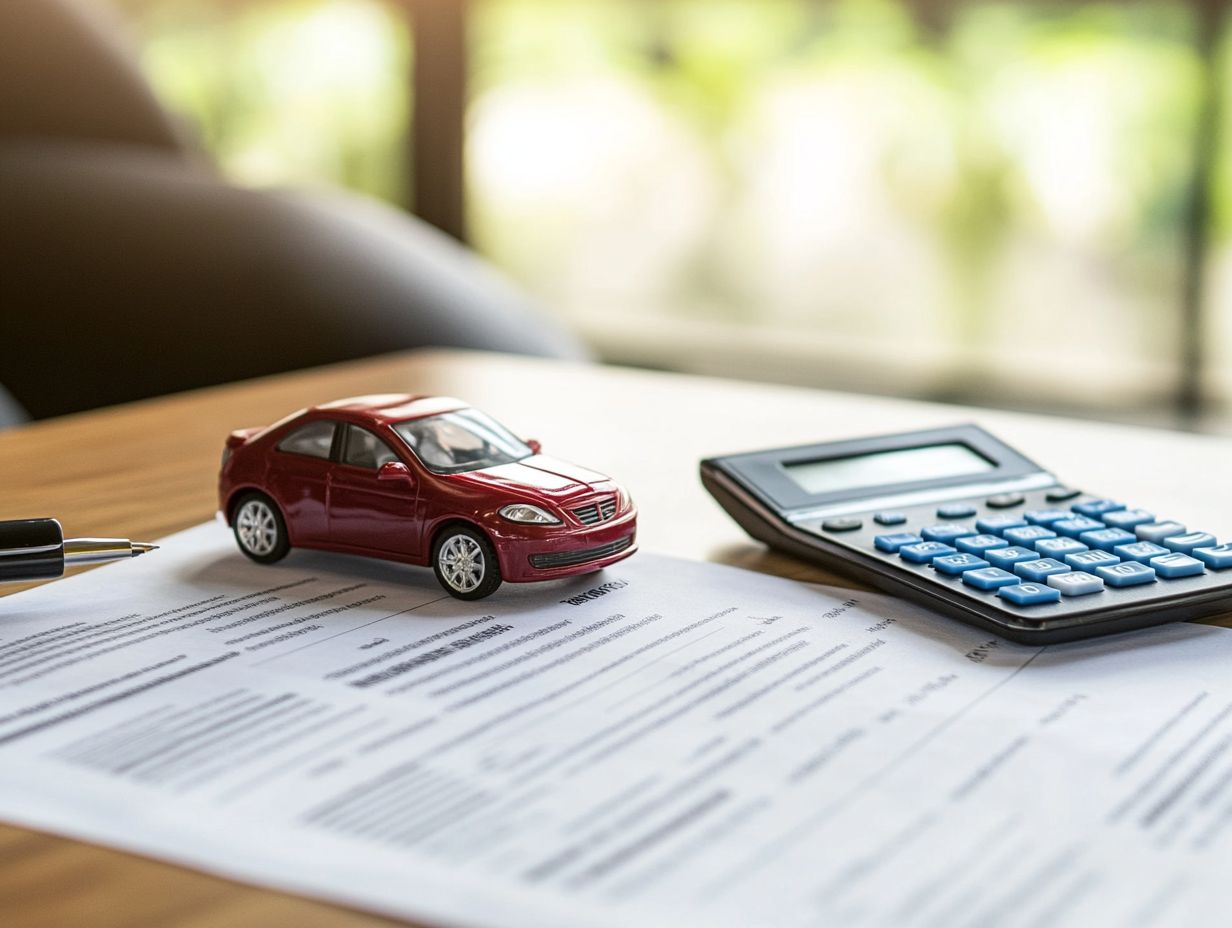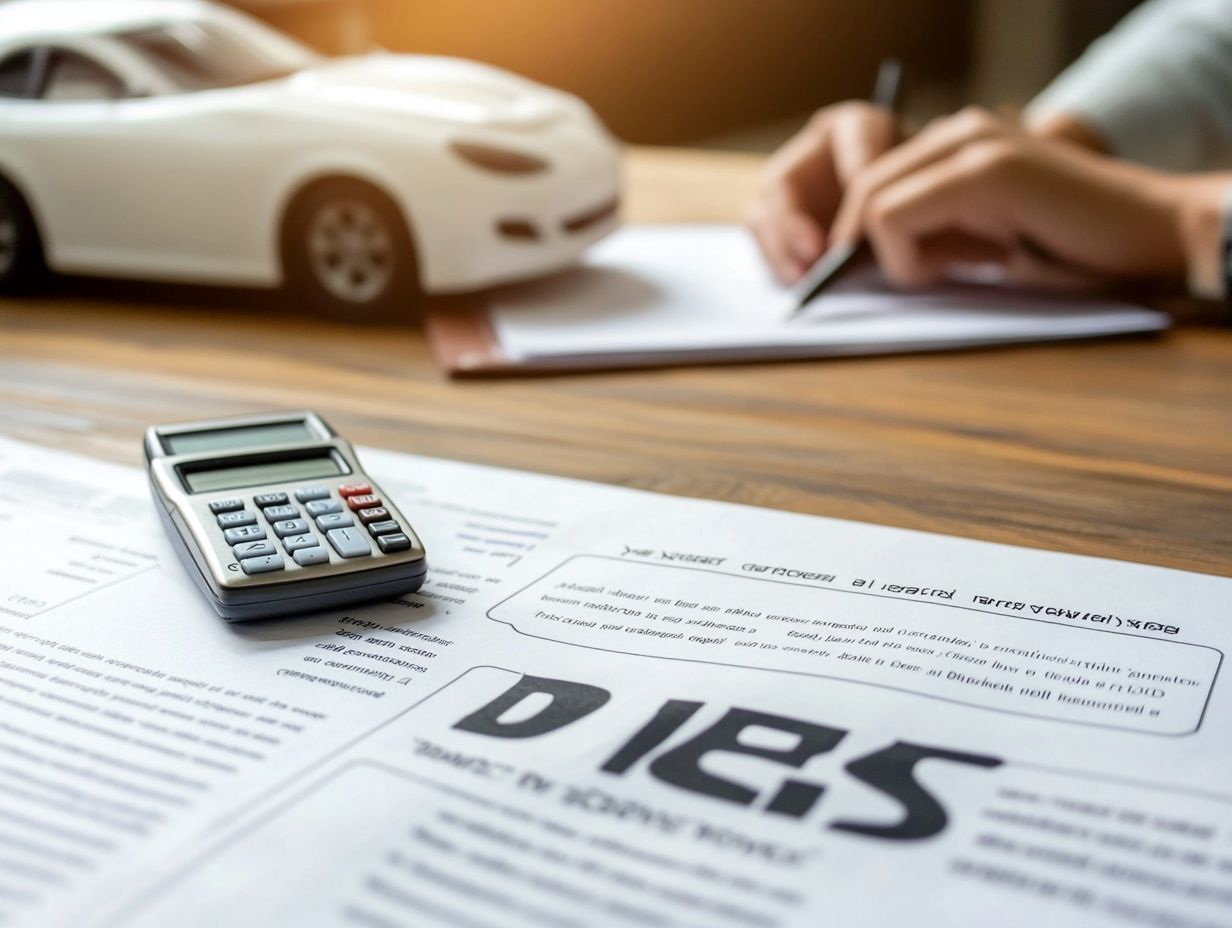Understanding Coverage Limits for High-Risk Drivers
Navigating the world of car insurance can be particularly challenging for drivers like you if you re classified as a high-risk driver.
So, what exactly defines a high-risk driver? How do associated coverage limits influence your insurance rates and options? This article delves into critical factors that make you a high-risk driver. It will also cover the significance of coverage limits and the various types of coverage available to you.
It also sheds light on how these limits are determined, providing you with practical tips for reducing your risk profile and potentially lowering your insurance costs.
Whether you re a seasoned driver aiming to improve your record or someone just beginning to explore insurance options, this guide will empower you with insights you need to navigate your coverage confidently.
Contents
- Key Takeaways:
- What is Considered a High-Risk Driver?
- Why Coverage Limits Matter for High-Risk Drivers
- Types of Coverage Limits
- How Coverage Limits are Determined for High-Risk Drivers
- Ways to Lower Coverage Limits for High-Risk Drivers
- Frequently Asked Questions
- What are coverage limits for high-risk drivers?
- Who is considered a high-risk driver?
- How are coverage limits determined for high-risk drivers?
- Why do coverage limits differ for high-risk drivers?
- Can high-risk drivers increase their coverage limits?
- What happens if a high-risk driver exceeds their coverage limits?
Key Takeaways:

- High-risk drivers are those with a history of accidents, violations, or risky behaviors that make them more likely to file a claim.
- Coverage limits can greatly impact insurance rates and options for high-risk drivers, making it important to understand and carefully consider when choosing coverage.
- Coverage limits are the maximum amounts your insurance will pay in case of a claim. They are determined based on factors such as driving history and risk assessment, but high-risk drivers can lower their limits by improving their record and taking advantage of discounts.
What is Considered a High-Risk Driver?
A high-risk driver is often recognized through a blend of their driving record and certain risk factors that insurance companies consider when evaluating premiums.
Elements like previous at-fault accidents, DUI convictions, and a history of multiple driving violations can heavily sway your classification as a high-risk driver. This classification typically results in elevated insurance rates and fewer coverage options.
Therefore, it’s essential to understand how your driving habits directly impact your insurance policies.
Factors That Contribute to High-Risk Status
Several factors contribute to your high-risk driving status, primarily revolving around your driving record and history of traffic violations elements that insurance companies evaluate with meticulous attention.
These factors typically include the frequency of accidents, any DUI convictions, and a pattern of other infractions such as speeding tickets. Each of these elements significantly shapes your risk profile. For instance, if you have multiple accidents, insurers may view you as more susceptible to future risks, labeling you as high-risk. Similarly, a history of DUI convictions raises red flags, indicating a potential disregard for safe driving practices.
Insurers rely on algorithms that place considerable weight on these violations, directly influencing their pricing strategies and resulting in substantially higher annual premiums for those categorized as high-risk.
The combination of these violations directly impacts the affordability and availability of your coverage. Understanding these implications is essential for navigating the complexities of insurance in a way that best suits your needs.
Why Coverage Limits Matter for High-Risk Drivers
Coverage limits are crucial for high-risk drivers, as they not only determine the scope of your insurance coverage but also significantly impact your insurance rates and the options available to you. For fleet drivers, understanding coverage is particularly important.
Grasping these limits is vital, especially since high-risk drivers face unique financial responsibilities that set them apart from standard drivers. Understanding uninsured motorist coverage for high-risk can empower you to make informed decisions tailored to your unique circumstances.
Knowing your coverage limits can save you money and help protect your assets don t wait to find out!
Impact on Insurance Rates and Options

Coverage limits greatly affect your insurance rates and options if you’re a high-risk driver. These limits are linked to the costs you might face in case of an accident.
If you have multiple traffic violations or a history of accidents, choosing the right coverage limits is crucial. Higher limits often mean higher premiums.
Drivers opting for maximum liability coverage may see their rates increase by about 30%. While minimum coverage may lower your premiums, it could lead to hefty out-of-pocket costs in an accident.
Many insurance providers offer discounts for safe driving. This can help reduce premium increases.
By understanding the relationship between coverage limits and rates, you can make informed choices that balance risk and affordability.
Types of Coverage Limits
Understanding the different types of coverage limits is essential for high-risk drivers. These limits determine the level of liability coverage and protection provided by various auto insurance policies.
Bodily Injury Liability
Bodily injury liability coverage is a critical part of auto insurance, especially for high-risk drivers. It offers financial protection against claims arising from injuries inflicted on others during an accident.
This coverage ensures that, if an incident occurs, you won t be burdened with costly medical bills and legal fees. For high-risk drivers facing elevated premiums due to prior violations or accidents, securing ample bodily injury liability coverage is even more important.
If you don t obtain sufficient coverage, you could find yourself in a precarious financial situation, possibly held personally accountable for damages exceeding your policy limits.
Annual premiums can vary widely; basic coverage might cost anywhere from $500 to $1,000, while those opting for higher limits could pay over $2,000, depending on your state and driving history.
Property Damage Liability
Property damage liability coverage is vital for high-risk drivers, as it protects you from financial responsibility for damage to someone else’s property in an auto accident.
This coverage shields you from potentially staggering repair or replacement costs and contributes to your peace of mind while driving. For high-risk drivers, ensuring adequate property damage liability is particularly important, as it can impact your insurance claims and premiums.
In the event of an accident, this coverage guarantees that the injured party receives compensation, effectively streamlining the claims process. Opting for higher coverage limits can also benefit the insurance market as it helps reduce significant losses for insurers, keeping your premiums competitive.
Generally, the costs linked to various coverage limits can fluctuate, highlighting the need to select appropriate protection tailored to your driving profile.
How Coverage Limits are Determined for High-Risk Drivers

Coverage limits for high-risk drivers are established through a thorough evaluation of their driving history and various risk factors that insurance companies analyze to determine premiums and available liability coverage options.
Assessing Driving History and Risk Factors
Assessing your driving history and risk factors is a crucial step for insurance companies in determining the right coverage limits and premiums. This is especially important for high-risk drivers.
Insurers analyze recent traffic violations. They evaluate the severity and frequency of incidents such as DUI convictions and previous accidents.
They also consider your patterns of behavior over time. Insurers use tools like telematics, which are devices that track how you drive, showing things like speeding or aggressive driving.
Are you a high-risk driver looking to save money? Here s how to boost your profile! Adopting safer driving practices, completing defensive driving courses, and maintaining a clean driving record over an extended period can lead to more favorable evaluations and lower premiums down the road.
Ways to Lower Coverage Limits for High-Risk Drivers
High-risk drivers have the opportunity to take proactive measures to lower their coverage limits and insurance premiums.
By focusing on improving their driving record and capitalizing on available insurance discounts, they can significantly enhance their financial standing while navigating the complexities of insurance.
Improving Driving Record and Taking Advantage of Discounts
Improving your driving record is a savvy strategy for high-risk drivers who aim to secure better insurance premiums and access various discounts that insurers offer.
By adopting safer driving habits like strictly obeying traffic laws and avoiding distractions you can significantly enhance your record. Enrolling in defensive driving courses not only equips you with essential skills to navigate challenging road situations but also demonstrates your commitment to safety.
Many insurance companies reward you with discounts for completing these courses. Maintaining a clean driving history over time can also lead to lower premiums, making it a financially wise move for high-risk individuals.
Frequently Asked Questions

What are coverage limits for high-risk drivers?
Coverage limits for high-risk drivers refer to the maximum amount of protection an insurance policy provides. For those with high-performance vehicles, understanding coverage for high-performance cars is particularly important, as these limits apply to individuals who are considered to be at a higher risk of being involved in accidents or filing claims.
Who is considered a high-risk driver?
High-risk drivers are individuals who have a history of traffic violations or accidents. This can include inexperienced drivers or those with a poor credit score, DUIs, or other serious driving offenses.
How are coverage limits determined for high-risk drivers?
Insurance companies consider several factors when determining coverage limits. These include driving record, age, location, and type of vehicle.
Generally, the higher the risk the driver poses, the lower the coverage limits will be.
Why do coverage limits differ for high-risk drivers?
High-risk drivers are considered more likely to file a claim. Insurance companies may offer lower coverage limits to protect themselves from potential losses.
Can high-risk drivers increase their coverage limits?
Yes, high-risk drivers can typically increase their coverage limits by purchasing additional coverage or upgrading their policy. However, this may result in higher premiums due to the increased risk being covered.
What happens if a high-risk driver exceeds their coverage limits?
If a high-risk driver exceeds their coverage limits, they may be responsible for paying out-of-pocket for any additional costs or damages. It is important for high-risk drivers to understand high-risk driver insurance options and ensure they have enough protection to cover potential expenses.






